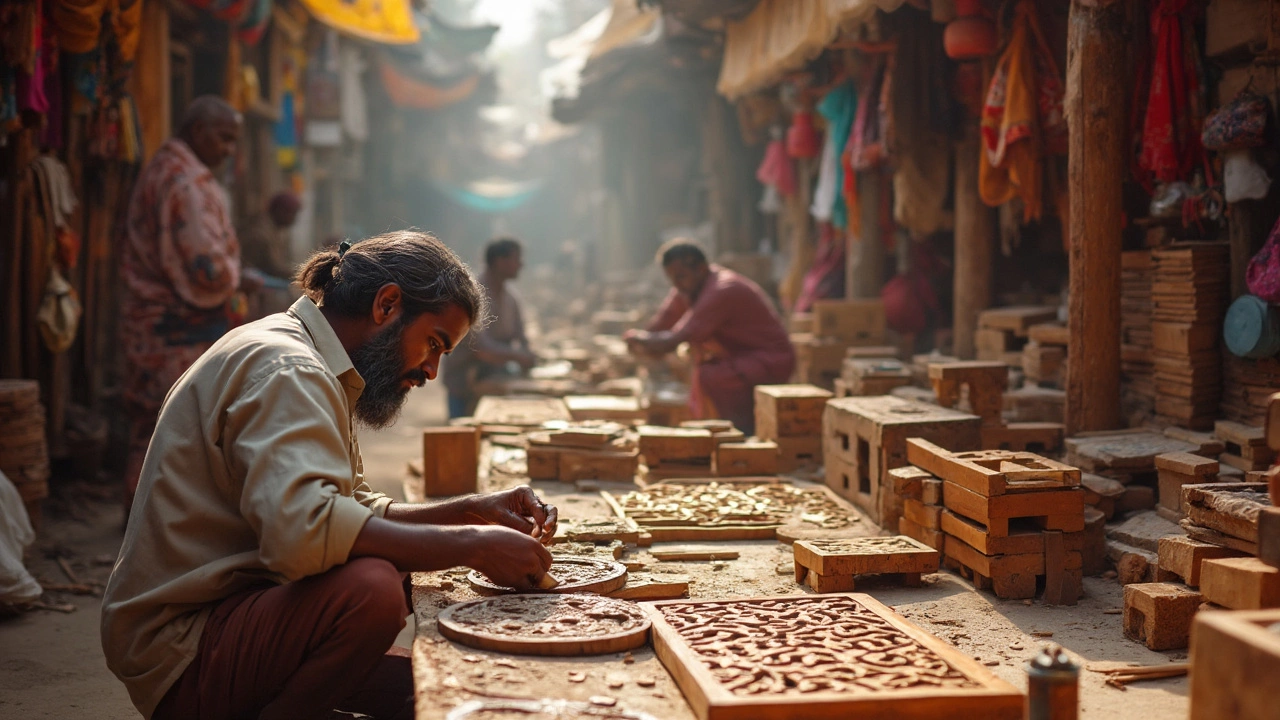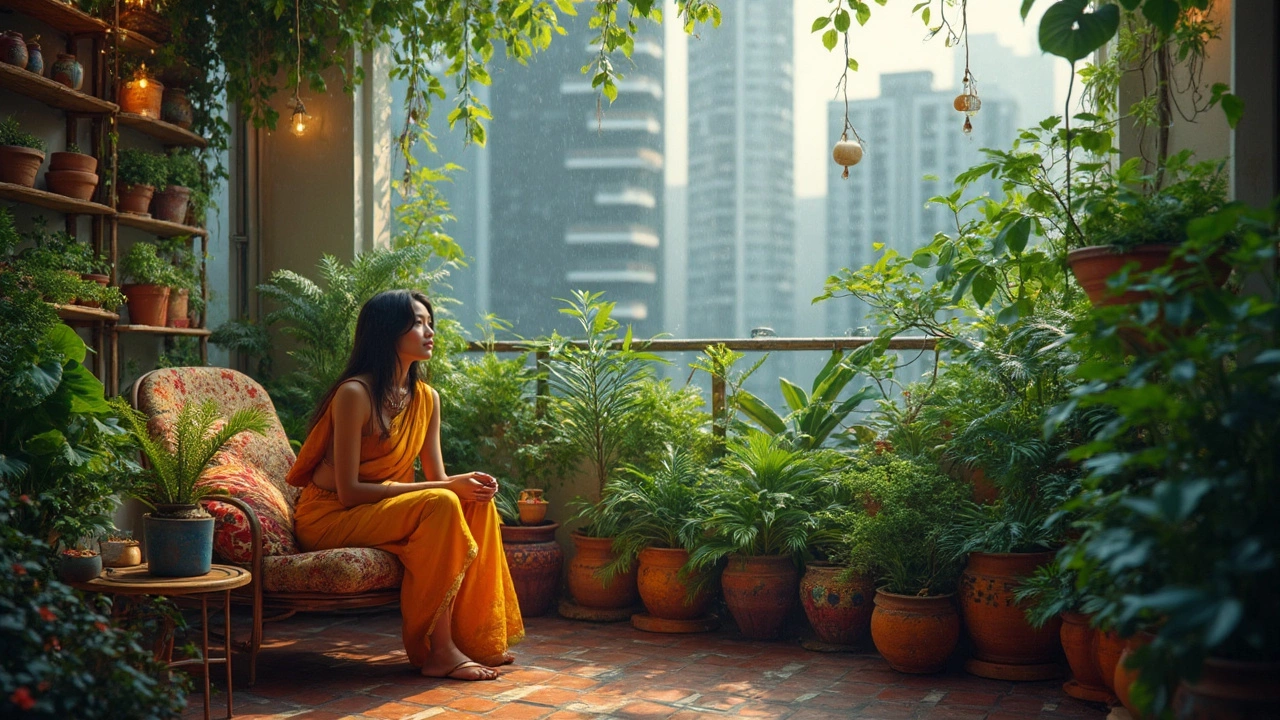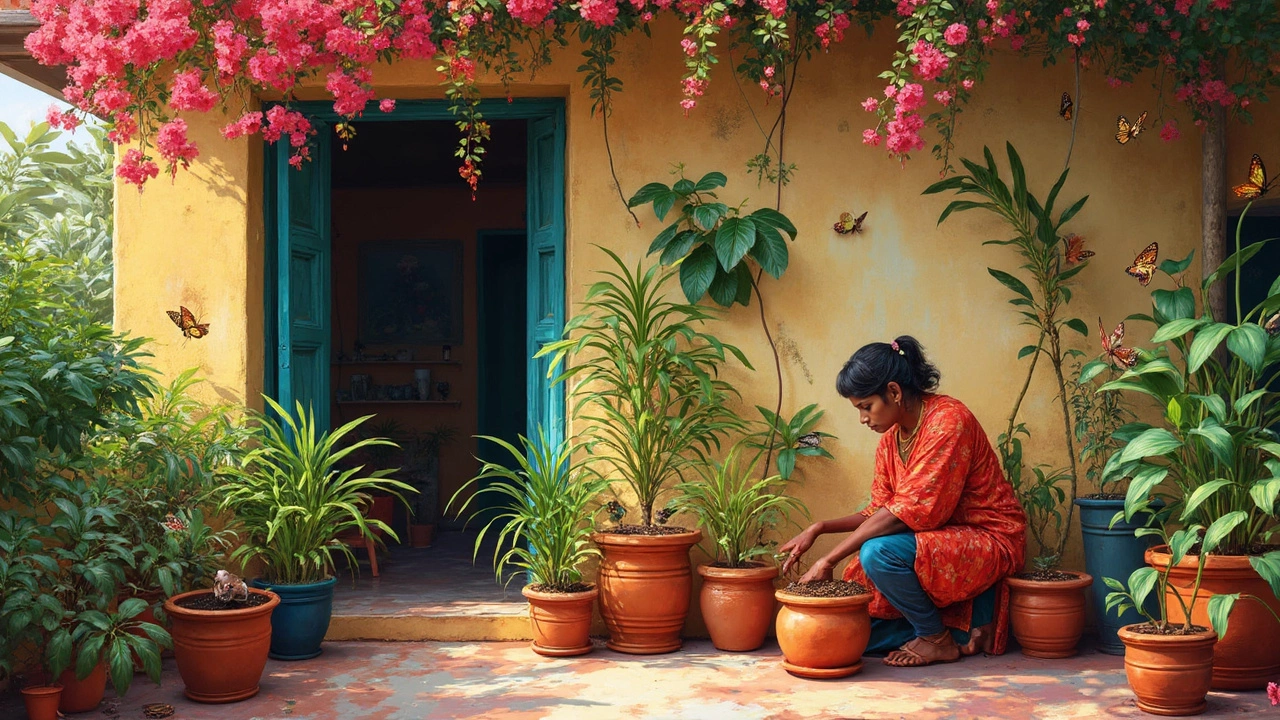Top Flowers in High Demand Across India's Booming Floral Market
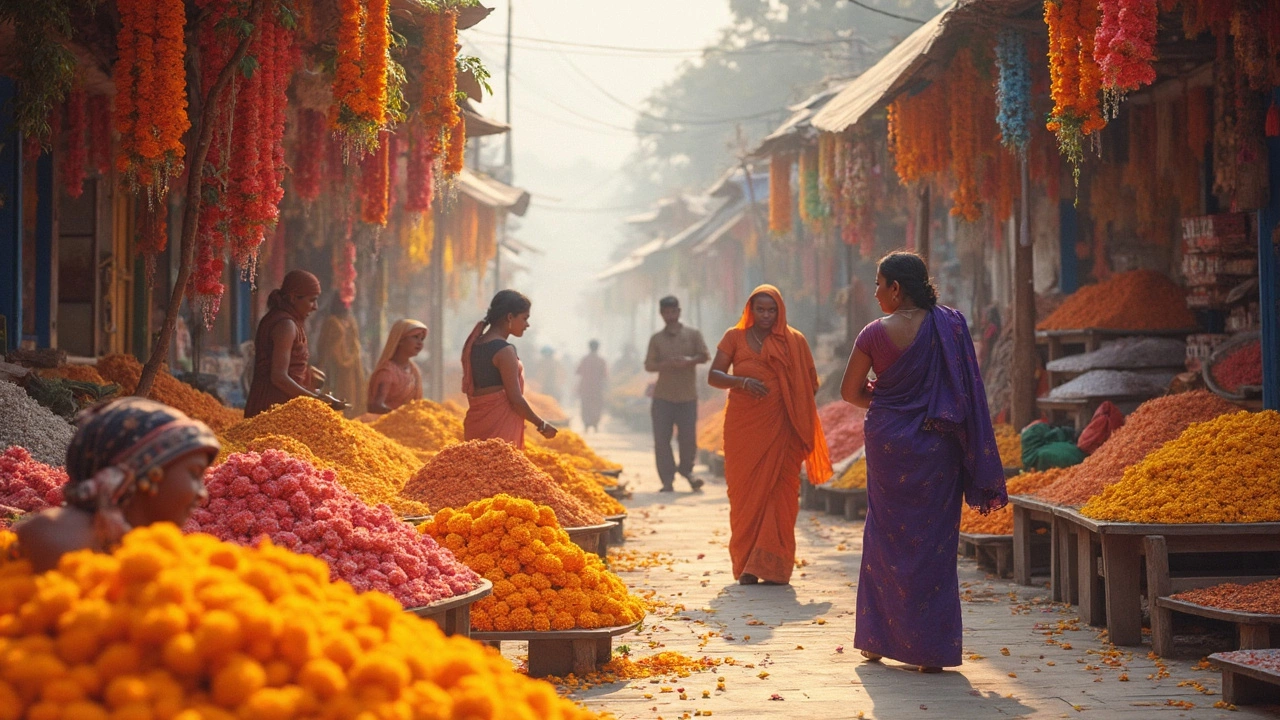
Ever seen a flower mandap lit up at an Indian wedding or a temple blanketed in marigolds and wondered why some flowers seem to pop up everywhere? India's appetite for flowers isn't just about beauty—it's tradition, spirituality, and cash all rolled into one. The flower industry here doesn't sleep. What's wild is how the demand for certain blooms can blow up overnight, thanks to festivals, infinite nuptials, and—believe it or not—even cricket matches. And if you think it's all about marigolds, you're in for a few surprises.
The Big Players: Flowers That Dominate India's Floral Scene
Let’s cut straight to it—when people across India buy fresh flowers, marigolds are king. You’ll spot them dangling in roadside stalls, tangled as garlands outside temples, or even peppered over cricket stadium entrances during tournaments. Why? They're sturdy, they last in heat, and they hold deep religious meaning. Walk through any market in Delhi, Mumbai, or Chennai, and you'll see sellers with sacks bursting with brilliant yellow and orange marigold heads, sometimes moving over 1,000 kilograms in a single morning, especially near major festivals like Diwali and Durga Puja.
But let’s not pretend marigolds run the show solo. Roses, especially red ones, trail closely behind. Weddings gobble up millions—yes, literally millions—of stems every wedding season. Roses are the go-to for everything from centerpieces to love-struck proposals, and the demand keeps rising in India’s growing gifting culture. Local farmers in places like Pune and Bengaluru have turned rose farming into a science, timing blooms for Valentine’s, Dussehra, or anytime a cricket win sparks spontaneous street celebrations.
Jasmine joins the party as a real crowd-pleaser too. Step onto a South Indian street in the early morning, and you'll catch that unmistakable, sweet scent from women weaving jasmine strands into their hair. These delicate flowers aren’t just for looking pretty—they’re woven into everyday life, turning up in prayers, celebrations, and sometimes even on dashboards of buses and cabs. Jasmine demand skyrockets during summer months and festival cycles, especially during Krishna Janmashtami and Pongal.
Now, here’s a curveball: Gladiolus and Gerberas are crashing the party, especially in metro areas. Huge events, corporate gatherings, and upmarket weddings crave their dramatic colors and shapes, pushing farmers in places like West Bengal and Maharashtra to plant more every year. Both flowers fetch higher prices per stalk than the classics, and the market for exotic flowers is only getting juicier as India’s middle-class expands and people chase bigger, flashier celebrations.
| Flower | Main Use | Major Producing States | Peak Demand Seasons |
|---|---|---|---|
| Marigold | Religious, weddings, festivals | Andhra Pradesh, Tamil Nadu, Maharashtra, Karnataka | Diwali, Dussehra, wedding season |
| Rose | Weddings, gifting, garlands | Karnataka, Maharashtra, West Bengal | Weddings, Valentine's Day, Mother’s Day |
| Jasmine | Religious, daily use, hair adornment | Tamil Nadu, Karnataka, Andhra Pradesh | Summer, religious festivals |
| Gerbera | Corporate events, gifting | West Bengal, Maharashtra, Himachal Pradesh | Year-round, peaking during festive and corporate event seasons |
| Gladiolus | Weddings, decor, exhibitions | West Bengal, Haryana, Maharashtra | Winter and spring weddings |
On a quick fact note: India ranks among the top ten floral producers worldwide. According to export data from 2023, the country pumped out over 2.5 million metric tons of loose and cut flowers. That’s a heck of a lot of petals!
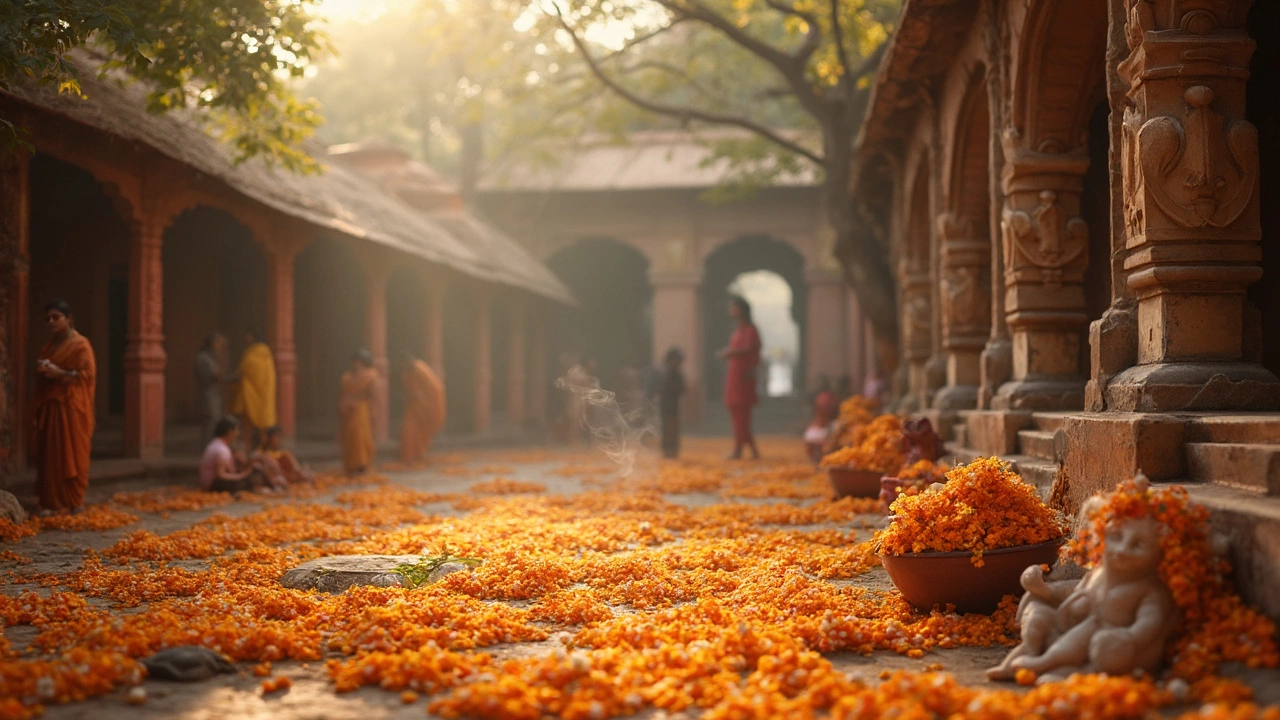
Why Certain Flowers Lead the Pack in Demand
Culture, climate, and convenience drive which blooms steal the show. Take marigolds, for example. Besides their eye-searing color, these flowers are crazy tough. Even in peak Indian summer, they stand strong days after picking. This makes them perfect for garlands, puja platters, and big events—no wilt within hours. Plus, marigolds are easy for farmers to grow on large scale, given India’s mostly warm climate. Throw in high yields and short harvest windows after planting, and you’ve got a flower that fits the market's high-volume, fast-turnover demands.
With roses, it's about romance and rituals. Want to impress someone or win over in-laws? Show up with rose garlands. Indian weddings often order roses by the truckload—hybrid tea roses from Pune or sleek Dutch varieties from greenhouses near Bengaluru. Since the late 1990s, demand has steadily shifted from just red roses to an entire spectrum, including yellow, peach, and even blue-tinted for the statement seekers. Roses are also a top export, especially to the Middle East and Europe, especially around Valentine’s week when prices spike dramatically.
Jasmine, on the other hand, wears many hats. Folks in Tamil Nadu and Andhra Pradesh call it "Mallipoo", and it’s almost a daily essential for temple worship and personal grooming. It might look fragile, but it travels well in cool transport and holds its shape for garlands even in hot weather. Night-blooming varieties see the highest demand; their scent peaks just when morning pujas kick off. Flower farmers in these states earn premium prices for untouched, “string-ready” blooms, especially during religious festivals like Navaratri and temple chariot processions.
Don’t underestimate novelty. Gladiolus and Gerbera aren’t native flora, but they’ve caught on in a big way—thanks to a rising class of event planners pushing customers to try something different. Their bold colors turn heads at any event, and commercial growers have invested in greenhouses and drip irrigation to keep them thriving year-round. Take a walk at any metro city’s flower auction—Kolkata, Bengaluru, even out-of-the-way towns like Hosur—and you’ll find buyers jostling for the freshest gladiolus stalks, especially during December-March wedding glut.
Seasonal spikes play a huge role too. Flower demand can suddenly double or even triple around major religious festivals and the May-June wedding crush. The rapid turnover and perishability of flowers mean farmers and sellers must watch trends almost daily. If there’s an unexpected monsoon delay or a sudden jump in wedding dates after a government policy change (yes, it happens), wholesalers scramble to meet the new demand. This frantic pace even shapes planting choices the year before.
Tech is starting to make a difference, too. E-commerce flower platforms have shaken up old-school mandis (flower markets), simplifying bulk sourcing for wedding planners and temple organizers. Several startups now let you preorder rare breeds or bulk garlands straight from the farm at almost midnight if you’re desperate. For farmers watching their costs, access to weather forecasts and advanced drip irrigation is helping yield more marketable stems from smaller plots.

Making the Most of India’s Flower Craze: Tips and Tricks
If you’re planning to sell, source, or just buy flowers in India, timing and knowledge make all the difference. Indian festivals and wedding calendars basically decide wholesale prices. Booking your bulk order a week before Diwali will probably cost you double compared to off-season rates. Smart buyers hit the mandis early mornings—best deals, freshest stock. With marigolds, watch the stem thickness and vibrancy of color; the denser the bloom, the higher the quality for garlanding.
Farmers can cash in on the demand by mixing their crops. Instead of only growing marigolds, which saturate the market in October, consider staggering harvests of gladiolus or gerbera, especially in off-peak months. This helps balance revenues when market prices for the main crop dip. Flowers like tuberoses and orchids fetch high prices in boutique markets, especially when locally grown to cut down import costs from Thailand or the Netherlands—a big deal for luxury events.
Watch out for weather swings. A surprise rain can wipe out an entire jasmine crop or stunt rose blooms. More seasoned growers use temporary net-houses or tunnels for weather protection. Checking government forecasts can sometimes make or break a season—savvy farmers set up WhatsApp groups just for crop alerts (and the best price gossip).
If you’re hosting an event and want maximum flower impact without busting your budget, try mixing lower-cost blooms like marigolds and jasmines with a few exotic statement flowers in arches or centerpieces. Markets love this blending of tradition with a twist. Some wedding decorators even reuse garlands creatively from ceremony to reception, especially for sustainable-minded clients.
For urban buyers, e-commerce is a game-changer. Many platforms guarantee overnight delivery of loose flowers and ready garlands for events, making it a real option even for late planners. It’s worth checking for certified sellers who source directly from local farmers—sometimes you get fresher flowers and better rates without middlemen cutting into quality and price. With the rise of eco-conscious events, you’ll also find more sellers offering biodegradable floral décor and locally sourced seasonal blooms to reduce environmental impact.
- Pro tip for temples and prayer use: Always ask for morning-harvested blooms. They retain fragrance and last longer through rituals compared to afternoon-harvested flowers.
- If you’re gunning for roses for a big celebration, aim to book your order days ahead of major romantic holidays or Valentine’s—price hikes can be dramatic just 2-3 days before peak demand.
- On a budget? Consider sourcing directly from local farm co-ops rather than city flower stalls. Many now offer direct delivery programs, and you might get a wider flower selection too.
- If you love how jasmine smells, store the garlands in the fridge overnight (not the freezer!) to extend life for another day.
So, which flower actually has the highest demand in India? If you had to bet on one, marigolds still hold the crown, thanks to their unbeatable mix of color, cost, and cultural punch. Roses run them close, followed by jasmine with its everyday and festival value. But keep your eye on the new kids like Gerbera and Gladiolus—they’re inching up each year, changing up India’s vast flower landscape one petal at a time.

